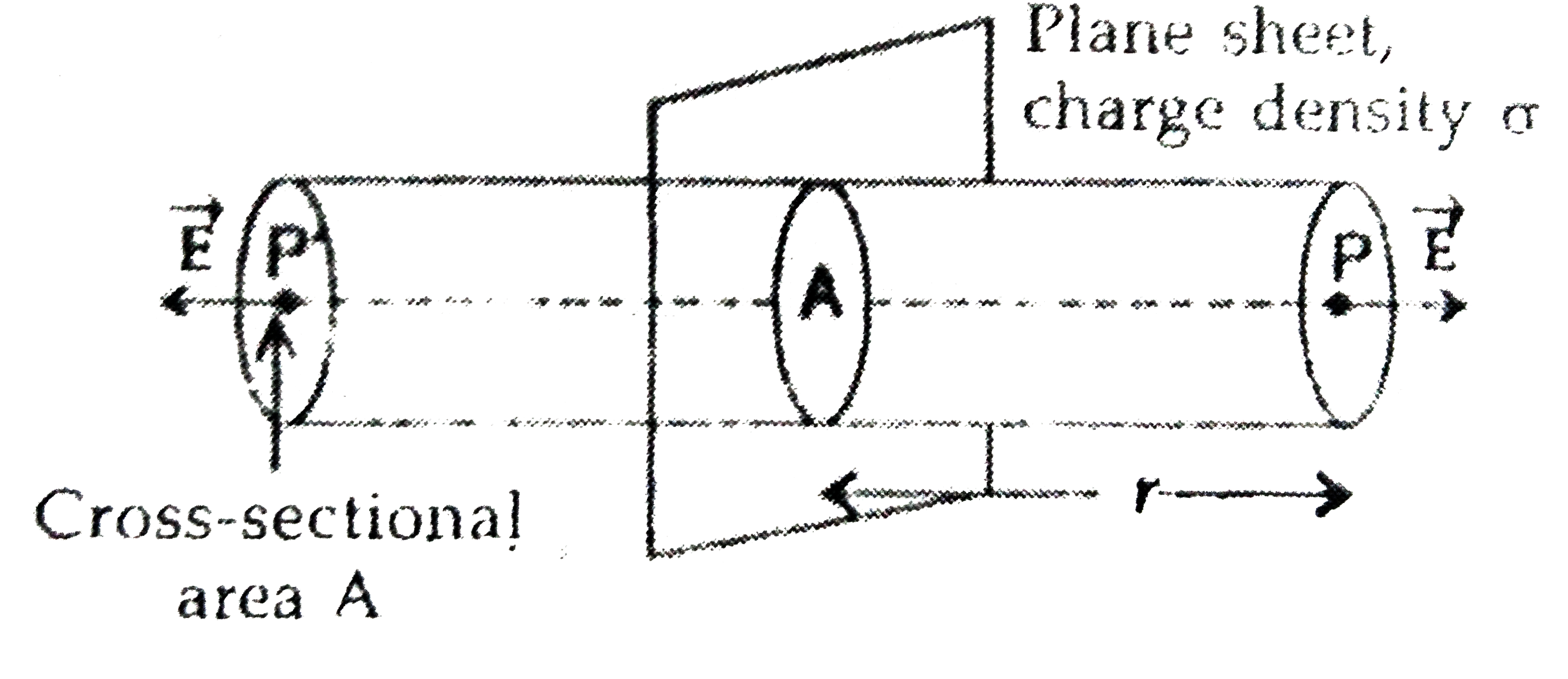(a) Define electric flux. Write its S.I. units.
(b) Using Gauss's law, prove that the electric field at a point due to a uniformly charged infinite plane sheet is independent of the distance from it.
(c ) How is the field directed if (i) the sheet is positively charged, (ii) negatively charged ?
(a) Electric flux is defined as the dot product of electric field intensity vector. Its S.I. unit is Nm2/C.
(b) Let σ be the uniform surface charge density of an infinite plane sheet. Consider a Gaussian surface to be a rectangular sectional area A.

From figure, only the two faces 1 and 2 will contribute to flux. Electric field lines are parallel to the other faces and they do not contribute to the total flux.
The net flux through the Gaussian surface is 2EA. The charge enclosed by the closed surface is σA.
By Gauss's law, 2EA=σA∈0 or →E=σ2∈0ˆn
Since the expression does not contain x, so electric field is independent of the distance.
(c ) (i) The electric field is directed perpendicularly away from the sheet.
(ii) The electric field is directed perpendicularly towards the sheet.

Similar Questions
Using Gauss' law porve that the electric field at a point due to a uniformaly charged infinite plane sheet is independent of the distance form it. How is the field directed if the sheet is
(i) positively charged, (ii) negatively charged.
View SolutionState Gauss's theoram in electric field at a point due to a uniformaly charged infinite plane thin sheet.
View Solution
Knowledge Check
The expression for electric field intensity at a points outside uniformly charged thin plane sheet is (where, d is the distance of point from plane sheet)
Aindependent of dBdirectly proportional to √dCdirectly proportional to dDdirectly proportional to 1√dThe intensity of electric field at a point due to charged conductor of any shape or plane charged sheet is
Aindependent of distance of that pointBdepends on distance of that pointCindependent of charge density and surrounding mediumDnone of these
State Gauss's law in electrostatics. Using this law derive an expression for the electric field due to a uniformly charged infinite plane sheet.
View SolutionState Gauss's law in electrostatics. Using this law derive an expression for the electric field due to a uniformly charged infinite plane sheet.
View SolutionThe electric field at a point near an infinite thin sheet of a charged conductor is .
View SolutionElectric field at a point near a uniformaly charged infinite plane sheet having surface density of charge σ is given as E= ________________
View SolutionUsing Gauss’ law, derive an expression for the electric field at a point near an infinitely long straight uniformly charged wire.
View SolutionUsing Gauss’ law, derive an expression for the electric field at a point near an infinitely long straight uniformly charged wire.
View Solution
